Title : A rare case of Cryptococcus gattii meningoencephalitis complicated by immune reconstitution inflammatory syndrome and possible anti-NMDA receptor encephalitis
Abstract:
Background: Cryptococcus gattii, endemic to tropical and subtropical regions, is a primary fungal pathogen capable of causing severe meningoencephalitis in immunocompetent individuals. Its clinical course is often complicated by raised intracranial pressure (ICP), the formation of cryptococcomas, and immune reconstitution inflammatory syndrome (IRIS) during antifungal therapy. Parainfectious autoimmune encephalitis, such as anti-N-methyl-D-aspartate receptor (NMDAr) encephalitis, is rarely described in this context.
Case Presentation: We report a complex case of a 24-year-old immunocompetent male with schizophrenia and polysubstance use who presented with a progressive frontal headache over several weeks. Initial assessments were unremarkable, and he was discharged multiple times before MRI revealed left frontal and pontine lesions. Further imaging identified a right upper lobe lung lesion, and lumbar puncture (LP) revealed a cerebrospinal fluid (CSF) opening pressure >35 cm H?O, with CSF microscopy confirming Cryptococcus gattii. HIV testing was negative.
The patient was transferred to a tertiary centre for management of raised ICP, where he underwent serial therapeutic LPs and ventriculoperitoneal shunt insertion. Induction therapy with liposomal amphotericin B and flucytosine was initiated. Although he initially improved, he later deteriorated with fever, vision loss, and disorientation. This was attributed to paradoxical IRIS, and corticosteroids were escalated.
Subsequently, the patient developed delirium, ataxia, and new neurological deficits including right upper limb neglect. A repeat MRI showed progression of leptomeningeal enhancement. Anti-NMDA receptor antibodies were detected in the CSF, raising the possibility of autoimmune anti-NMDA receptor encephalitis. He was treated with high-dose corticosteroids and intravenous immunoglobulin (IVIg), with subsequent clinical improvement.
Despite completing antifungal induction and transitioning to fluconazole consolidation, he was readmitted weeks later with recurrent headache, fever, and leg weakness. LP and infectious workup were negative, but MRI revealed new enhancing subcortical lesions. EEG showed mild cortical dysfunction without seizures. He responded to renewed immunosuppression with dexamethasone and IVIg.
Discussion: This case illustrates the diagnostic and therapeutic complexity of C. gattii meningoencephalitis in an immunocompetent host, particularly when complicated by IRIS and suspected autoimmune encephalitis. IRIS can mimic treatment failure and distinguishing it from post-infectious phenomena like anti-NMDAr encephalitis is difficult without clear serological and radiological delineation. The presence of NMDAr antibodies, clinical response to immunomodulation, and lack of alternative infectious causes suggest a possible parainfectious autoimmune mechanism triggered by the underlying fungal infection or IRIS.
Conclusion: To our knowledge, this is the first reported case of Cryptococcus gattii meningoencephalitis complicated by both paradoxical IRIS and anti-NMDAr encephalitis. It highlights the need for early recognition of cryptococcal infection in immunocompetent patients, aggressive ICP management, and vigilance for overlapping inflammatory and autoimmune complications. Multidisciplinary management, including neurology and infectious diseases input, is critical in such presentations to guide immunosuppressive and antifungal strategies. Long-term follow-up is essential to monitor for relapse and mitigate steroid-related adverse effects.


